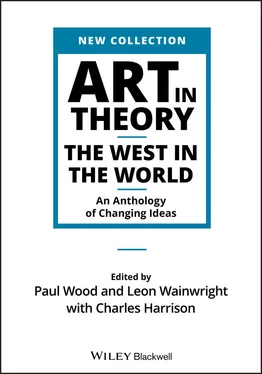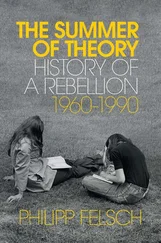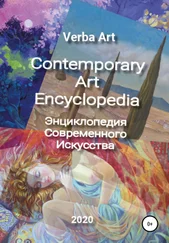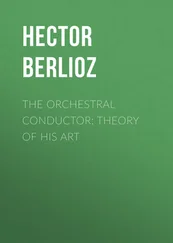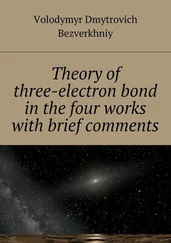10 Part III: Revolution, Romanticism, Reaction IIIA HistoryIIIA1 Johann Gottfried Herder (1744–1803) from Outlines of a Philosophy of the History of Man IIIA2 Charles Bell (1774–1842) from Essays on the Anatomy of Expression in Painting IIIA3 Friedrich Schlegel (1772–1829) ‘On the Language and Philosophy of the Indians’ IIIA4 Joseph Fourier (1768–1830) from ‘Historical Preface’ to the Description of Egypt IIIA5 Edward Moor (1771–1848) from The Hindu Pantheon IIIA6 Richard Payne Knight (1751–1824) from An Inquiry into the Symbolical Language of Ancient Art and Mythology IIIA7 John Flaxman (1755–1826) ‘Style’ IIIA8 Georg Wilhelm Friedrich Hegel (1770–1831) from Aesthetics: Lectures on Fine Art IIIA9 Georg Wilhelm Friedrich Hegel (1770–1831) from Lectures on the Philosophy of World History IIIA10 John L. Stephens (1805–52) from Incidents of Travel in Yucatan IIIA11 Arthur Schopenhauer (1788–1860) ‘On Human Nature’ IIIA12 Gottfried Semper (1803–79) from The Four Elements of Architecture IIIB Visions of the ExoticIIIB1 Samuel Taylor Coleridge (1772–1834) ‘Kubla Khan’ IIIB2 Maria Edgeworth (1768–1849) from The Absentee IIIB3 George Gordon, Lord Byron (1788–1824) from The Giaour IIIB4 Thomas De Quincey (1785–1859) from Confessions of an English Opium‐Eater IIIB5 Johann Wolfgang Goethe (1749–1832) from the West–Eastern Divan IIIB6 Giacomo Leopardi (1797–1837) from Zibaldone IIIB7 Alfred, Lord Tennyson (1809–92) from ‘Timbuctoo’ IIIB8 Eugène Delacroix (1798–1863) Letters and notes on his journey to North Africa IIIB9 George Catlin (1796–1872) ‘Letter from the Mouth of the Yellowstone River’ IIIB10 John Constable (1776–1837) from ‘Discourses’ IIIB11 David Roberts (1796–1864) from his travels to Egypt and the Middle East IIIB12 Jean Auguste Dominique Ingres (1780–1867) Notes on the Turkish baths IIIC Missionaries, Managers and ResistanceIIIC1 Thomas Paine (1737–1809) from Rights of Man IIIC2 William Blake (1757–1827) from America, a Prophecy IIIC3 Mirza Abu Talib (or Taleb) Khan (1752–1805) from his Travels IIIC4 Lady Maria Nugent (1771–1834) from her journal IIIC5 William Wordsworth (1770–1850) To Toussaint L’Ouverture IIIC6 James Mill (1773–1836) from The History of British India IIIC7 Percy Bysshe Shelley (1792–1822) ‘Ozymandias’ IIIC8 Henry Salt (1780–1827) and Joseph Banks (1743–1820) Two letters IIIC9 John Davy (1790–1868) from An Account of the Interior of Ceylon IIIC10 William Ellis (1794–1872) from Polynesian Researches IIIC11 Ram Raz (1790–1833) from Essay on the Architecture of the Hindús IIIC12 Thomas Babington Macaulay, Lord Macaulay (1800–59) Minute on Indian Education IIIC13 James Mallord William Turner (1775–1851), William Makepeace Thackeray (1811–63) and John Ruskin (1819–1900) Three texts relating to J. M. W. Turner’s Slave Ship
11 Part IV: Modernity and Empire IVA Enduring Fictions and Transformed SpacesIVA1 Théophile Gautier (1811–72) from ‘Art in 1848’ IVA2 Théophile Gautier (1811–72) On Gérôme and artistic Orientalism IVA3 Théophile Thoré, writing as William Bürger (1807–69), from ‘New Tendencies in Art’ IVA4 Edmond and Jules de Goncourt (1822–96 and 1830–70 respectively) on Japanese art IVA5 Various authors on Japanese art and the ‘painting of modern life’ IVA5(i) Charles Baudelaire (1821–67) from a letter to Arsène Houssaye, 1861 IVA5(ii) Émile Zola (1840–1902) On Manet IVA5(iii) Edmond Duranty (1833–80) On ‘the new painting’ IVA5(iv) Stéphane Mallarmé (1842–98) from ‘The Impressionists and Edouard Manet’ IVA5(v) Théodore Duret (1838–1927) On Japan IVA5(vi) Félix Fénéon (1861–1944) from ‘The Impressionists in 1886’ IVA5(vii) Vincent Van Gogh On Japan IVA6 Philippe Burty (1830–90) ‘Ancient Japan and Modern Japan’ IVA7 Joris‐Karl Huysmans (1848–1907) from A Rebours IVA8 Pierre Loti (1850–1923) from The Marriage of Loti IVA9 A cluster of texts on Gauguin and Oceania IVA9(i) Paul Gauguin (1848–1903) from three letters written before leaving for Polynesia IVA9(ii) Paul Gauguin from Noa Noa IVA9(iii) Auguste Strindberg (1849–1912) and Paul Gauguin from an exchange of letters 1895 IVA9(iv) Paul Gauguin from Avant et après , Atuona, Hiva‐Oa IVA10 Hermann Bahr (1863–1934) Review of the Japanese exhibition at the sixth exhibition of the Vienna Secession IVB Society, Evolution and the Idea of ‘Race’IVB1 Robert Knox (1793–1862) from The Races of Men IVB2 Joseph‐Arthur, Comte de Gobineau (1816–82) from The Inequality of Human Races IVB3 Solomon Northup (1808– c. 1863) from Twelve Years a Slave IVB4 John Ruskin (1819–1900) from The Two Paths IVB5 Ernest Renan (1823–92) from ‘The Position of the Shemitic Nations in the History of Civilization’ IVB6 Karl Marx (1818–83) and Friedrich Engels (1820–95) On the emergence of the world system IVB7 Karl Marx (1818–83) On the ‘Asiatic mode of production’ and modern capitalism IVB8 The First International address to the people of the United States of America IVB9 Edmond de Goncourt (1822–96) from the Goncourt Journal IVB10 Charles Darwin (1809–82) from The Descent of Man IVB11 Friedrich Nietzsche (1844–1900) ‘Signs of Higher and Lower Culture’ IVB12 Encyclopaedia Britannica Ninth edition: ‘Negro’ IVB13 W. T. Stead (1849–1912) ‘To All English‐speaking Folk’ IVB14 R. H. Bacon (1867–1947) from Benin: The City of Blood IVB15 Rudyard Kipling (1865–1936) ‘The White Man’s Burden’ IVC Anthropology, Museums and the Origins of ArtIVC1 Owen Jones (1809–74) from The Grammar of Ornament IVC2 Edward Tylor (1832–1917) from Primitive Culture IVC3 Augustus Lane‐Fox Pitt‐Rivers (1827–1900) ‘Principles of Classification’ IVC4 J. G. Frazer (1854–1941) from The Golden Bough IVC5 Ernst Grosse (1862–1927) ‘Ethnology and Aesthetics’ IVC6 Henry Balfour (1863–1939) from The Evolution of Decorative Art IVC7 Alfred Haddon (1855–1940), from Evolution in Art IVC8 Alois Riegl (1858–1905) from Problems of Style IVC9 Alois Riegl (1858–1905) ‘The Place of the Vapheio Cups in the History of Art’ IVC10 George Birdwood (1832–1917) ‘Conventionalism in Primitive Art’ IVD The World in ViewIVD1 Gérard de Nerval (1808–55) from Scenes of Life in the Orient IVD2 Gustave Flaubert (1821–80) On the pyramids IVD3 Hiram Bingham (1789–1869) from A Residence of Twenty‐One Years in the Sandwich Islands IVD4 Sir Colin Campbell (1776–1847) Letter to Lord Stanley IVD5 Andrew Nicoll (1804–86) ‘A Sketching Tour of Five Weeks in the Forests of Ceylon’ IVD6 Robert Fortune (1812–80) from A Residence Among the Chinese IVD7 James Fergusson (1808–86) from History of Indian Architecture IVD8 Rajendralal Mitra (1824–91) from Indo‐Aryans IVD9 Robert Louis Stevenson (1850–94) On the South Seas IVD10 C. H. Read (1857–1929) and O. M. Dalton (1866–1945) ‘Works of Art from Benin City’ IVD11 Henry Ling Roth (1855–1925) ‘Primitive Art from Benin’ IVD12 Mary Kingsley (1862–1900) from West African Studies
12 Part V: The Significance of the ‘Primitive’ VA Authenticity, Form and FeelingVA1 A cluster of short texts on the initial encounter of the European avant‐garde with African art in 1906–7 VA1(i) André Derain (1880–1954) Letter to Maurice de Vlaminck, March 1906 VA1(ii) Maurice de Vlaminck (1876–1958) On his ‘discovery’ of African art in 1906 VA1(iii) Henri Matisse (1869–1954) On his encounter with African art in 1906 VA1(iv) Pablo Picasso (1881–1973) On his visit to the Trocadero museum in 1907 VA2 Wilhelm Worringer (1881–1965) from Abstraction and Empathy VA3 Roger Fry (1866–1934) ‘The Art of the Bushmen’ VA4 Guillaume Apollinaire (1880–1918) ‘Exoticism and Ethnography’ VA5 Franz Marc (1880–1916) Letter to August Macke VA6 Franz Marc (1880–1916) ‘The Savages of Germany’ VA7 August Macke (1887–1914) ‘Masks’ VA8 Emil Nolde (1867–1956) ‘On Primitive Art’ VA9 Alexander Shevchenko (1888–1948) ‘Neo‐Primitivism’ VA10 Henri Matisse (1869–1954) On his visits to North Africa VA11 Paul Klee (1879–1940) On his visit to Tunisia VA12 Hermann Bahr (1863–1934) from Expressionism VB The Reach of EmpireVB1 James A. Hobson (1858–1940) from Imperialism VB2 Charles Augustus Stoddard (1833–1920) from Cruising Among the Caribbees VB3 Edward Wilmot Blyden (1832–1912) ‘West Africa Before Europe’ VB4 Kakuso Okakura (1862–1913) from The Ideals of the East VB5 Sister Nivedita (1867–1911) ‘Introduction’ to Okakura’s The Ideals of the East VB6 W. E. B. Du Bois (1868–1963) from The Souls of Black Folk VB7 From the Harmsworth History of the World On the ‘degeneration’ of indigenous Australians VB8 Ananda Coomaraswamy (1877–1947) ‘The Aims of Indian Art’ VB9 E. B. Havell (1861–1934) ‘The New Indian School of Painting’ VB10 Lucien Lévy‐Bruhl (1857–1939) from How Natives Think VB11 Leo Frobenius (1873–1938) from The Voice of Africa VB12 Sigmund Freud (1856–1939) from Totem and Taboo
Читать дальше
